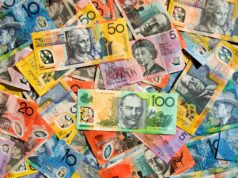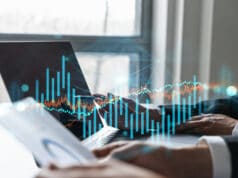Mark Douglas was a prosperous trading psychology coach and author who also had a finance career working with notable floor traders, hedge fund, and money managers in the 70s.
Sadly, Douglas passed on at the age of 67 in 2015, but not without coaching thousands of traders, giving countless seminars on trading psychology, and, more famously, writing multiple best-selling books from the early 90s.
The most popular of these is ‘Trading in the Zone: Master the Market with Confidence, Discipline, and a Winning Attitude.’, a seminal body of work.
Many will be surprised to learn the book came out at the turn of the millennium (2000), yet it still holds somewhat of a biblical status in all trading communities for many of its powerful lessons.
‘Trading in the Zone’ is primarily a trading psychology book strongly emphasizing how traders should deal with the randomness of the markets, how probabilities work, and how to understand the serious implications of risk. So, what specific teachings could we take from this gem?
Dealing with fear
Fear is a complex emotion to deal with since it’s a human’s survival response which is sometimes necessary and also detrimental to trading. So, on the one hand, we need fear to prevent us from making reckless decisions, but conversely, it can be hurtful in other circumstances where we should be more confident.
In the book, Douglas wrote extensively about the fears all traders face.
FOMO (fear of missing out)
Every profitable trader makes a profit but at very different times. Being too involved in the markets can result in FOMO, which can compel someone to take positions out of their trading system and rules.
If one is trading only when their edge is present, there is no need for them to feel like they’re missing out. One method to tackle this issue is for traders to not follow trades from others.
They should always believe in their own analysis and wait until their system shows them the right opportunity and time to take a position.
Fear of loss
Fear of loss means the fear of losing real money and also letting losses get out of hand. Regardless of a trader’s skill, the fear of losing real money never goes away.
The only way to overcome the unease is to gain enough experience on a demo account before going live and always being comfortable with the monetary value at risk in every position.
Fear of being wrong
The natural human instinct is being right, but in trading, this superiority complex is dangerous. A recurring theme in the book reflects how trading is a practice with high levels of uncertainty and that to trade efficiently is to be comfortable with this fact.
Accepting losing means one will be wrong occasionally in their career. In the end, it’s not about being right or wrong; it’s about playing the odds.
The ‘five truths’
Somewhere in the book, Douglas describes the five truths:
- Anything is possible.
- There is no need to know what will happen next to make a profit.
- Wins and losses do not follow a pattern; they are randomly distributed.
- An edge is an indication of a higher probability; it is never a certainty.
- The market is unique at every moment.
Let’s observe each of these in a bit more detail and make our own logical interpretations.
Anything is possible
This first truth links with some of the other ones as it reaffirms any trader should never assume they know for sure what will happen.
Even though markets produce moves of similar magnitude, there will be some instances where they will go further than anyone can predict. In these circumstances, managing your losses is the most important thing.
Instead of saying ‘price cannot go beyond this point,’ rather assume that the price can go as high or as low as it wants.
There is no need to know what will happen next to make a profit
This truth does sound slightly contradictory because trading requires some approach of prediction.
Though, in reality, the reason why this point makes sense is when a trader does make a profit, it is never because they knew beforehand that they would. When dealing with probabilities, you will never know when you’ll be right or wrong until after the fact because of the following truth.
Wins and losses do not follow a pattern; they are randomly distributed
Dealing with randomness is one of the book’s core themes and is a concept rarely discussed in much of the trading literature.
There is a random distribution of winners and losers in any trading strategy, implying a trader will never know with high certainty if an individual position will lose or win. Though if they have an edge in the markets, over the long run, they will tilt the odds in their favor.
An edge is an indication of a higher probability; it is never a certainty
For example, a trader’s edge may be trading highly-defined supply and demand zones. In their back and forward testing, this event may have yielded positive results over a long series of trades.
Though with each individual position, there is never any guarantee because past results are not always an indication of future performance.
The market is unique at every moment
Even if traders are trading ‘textbook’ set-ups that are supposed to look identical, every instant is unique from the time price may take to reach a stop loss, how far it can go, how long it may take to move, etc.
Whether a trade loses or wins, that moment is never a mirror image to the previous.
Final word
Although some individuals are not fans of the book, feeling it’s too repetitive and that Douglas was more of a coach than a real trader, sometimes the message is more crucial than the messenger.
Ultimately, ‘Trading in the Zone’ is only a guide to aid traders of all levels in shifting their psychological attitudes towards financial instruments without being too technical.
The high failure rate in many financial markets is less so on trading strategies but rather on behaviors of fear, greed, and other negative emotions. By appreciating this truth, it can provide traders with a much-needed edge to have a fruitful and sustainable career in the markets.




